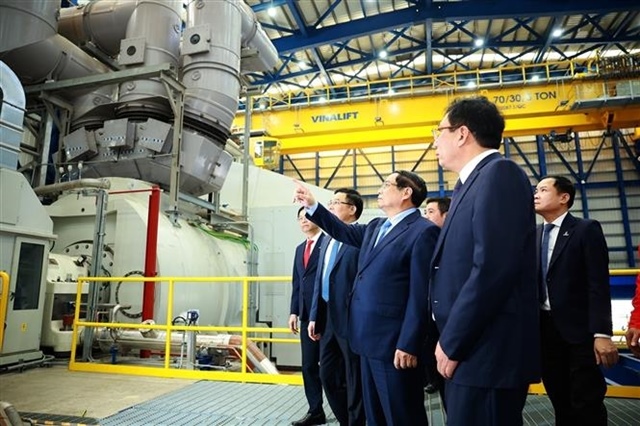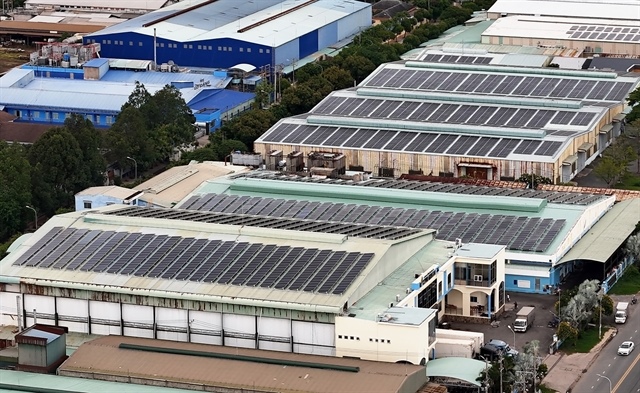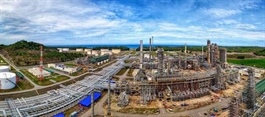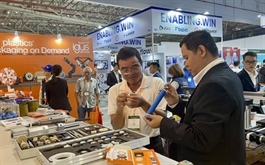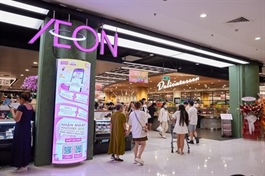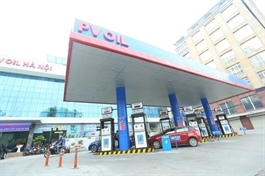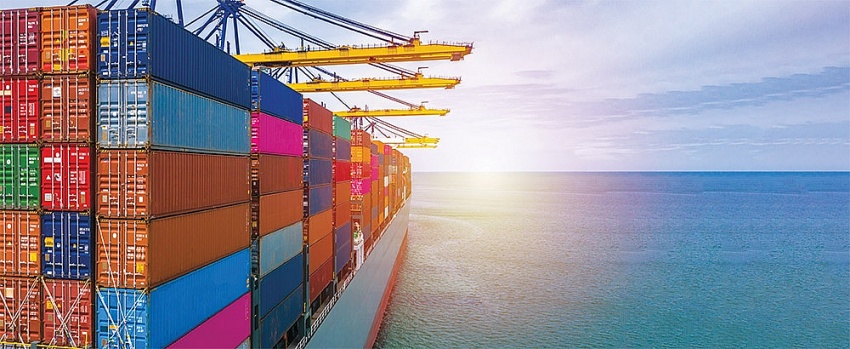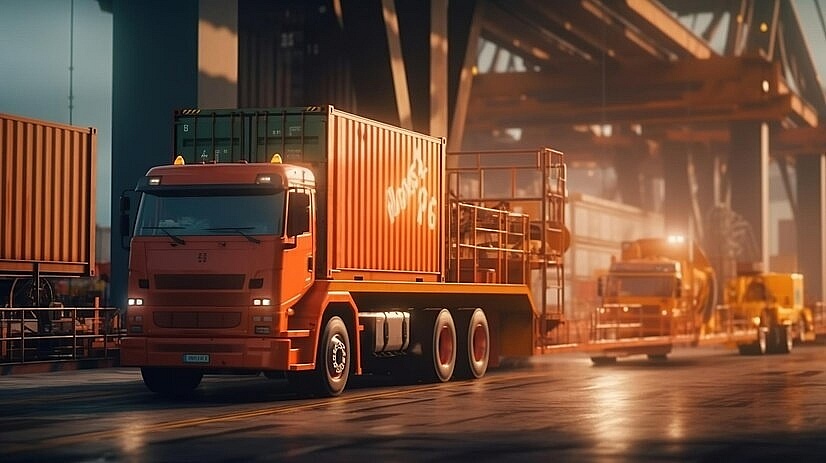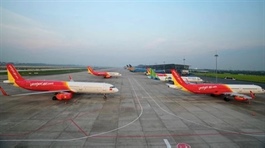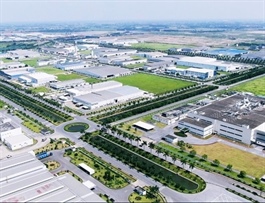Enterprises urge detailed implementation guidance on EPR
Enterprises urge detailed implementation guidance on EPR
Việt Nam needs to develop detailed implementation guidance on extended producer responsibility (EPR) for manufacturers and importers to fulfil their responsibility and promote a sustainable circular economy.

A plastic waste collection site in Lào Cai Province. The EPR implementation guidance must be made clearer and more detailed. — VNA/VNS Photo Ngọc Hà |
The EPR has been gradually applied since the beginning of this year, with manufacturers and importers taking more responsibility for managing the disposal of their product packaging when it is discarded into the environment under the Law on Environmental Protection 2020 and Government Decree 08/2022/NĐ-CP dated January 10th, 2022.
Accordingly, manufacturers and importers of products including batteries, tires, lubricants and commercial packaging must fulfil their recycling responsibilities starting from January 1, electrical and electronic products from the beginning of 2025, and vehicles (motorbikes and automobiles) from the beginning of 2027.
There are two options to fulfil their recycling responsibilities, according to Nguyễn Thi from the Department of Legal Affairs under the Ministry of Natural Resources and Environment.
The first option is that manufacturers and importers could do recycling by themselves. In the second option, manufacturers and importers could make financial contributions to the Việt Nam Environmental Protection Fund (VEPF) to support the recycling of products and packaging.
Chi Thị Vân Anh, General Secretary of Việt Nam Beer – Alcohol – Beverage Association (VBA), said that to date, the EPR implementation guidance has not been completed, which leaves manufacturers and importers confused.
Specifically, the rational cost of recycling for a unit volume of product or packaging (Fs) has not been determined yet, while Fs is important for manufacturers and importers to implement EPR, estimating the cost of their recycling responsibility.
Due to the lack of detailed guidance, enterprises can’t estimate and develop plans to implement the EPR, she said.
She also said that the number of recyclers posted on the EPR portal is still too modest to meet the recycling demand, which might cause market imbalance and push up recycling fees.
The EPR implementation guidance must be made clearer and more detailed, she stressed.
According to Japanese Chamber of Commerce and Industry in Việt Nam (JCCI), even some high-compliance and conscious companies may not know how to respond in order to fulfil their EPR because, for example, the method of recycling lubricants, the method of calculating recycling results and the scope of responsibility is unclear.
The regulations and detailed implementation guidelines are necessary for companies to fulfil their EPR, JCCI said.
In addition, JCCI believes that it is important for the whole society to engage in waste reduction, product reuse and material recycling and to share the costs fairly in order to achieve a sustainable circular economy.
The EPR raises the concern that if the burden of waste recycling costs is unilaterally imposed only on manufacturers and importers it will lead to increased product costs, and thus decrease international competitiveness.
“Vietnamese Government needs to take more initiative in designing a sustainable system, such as promoting awareness that the entire population is fairly responsible for the cost of recycling and providing incentives to encourage voluntary efforts by all citizens to reduce, reuse and recycle,” JCCI wrote in a position paper to Việt Nam Business Forum in March.
The European Chamber of Commerce in Việt Nam (Eurocham) pointed out that under the EPR framework, fees charged to producers exceed the recycling system’s capacity, which brings risk of high prices for consumers.
Eurocham proposes a 2-year, penalty free gradual EPR implementation period from 2024 to prevent business overload while balancing economic and environmental goals.
Additionally, it is vital to ensure transparency in managing the VEPF with open disclosure of allocations for recycling and technological advancements.
According to the British Chamber of Commerce in Việt Nam, it is necessary to introduce incentives to encourage the use of post-consumer recycled plastics (PCR) in packaging, create a competitive advantage for these materials and encourage manufacturers to utilise PCR in their production. The focus should also be on developing the recycling industry to promote a circular economy.
Under Government Resolution 01/NQ-CP on improving business environment and enhancing national competitiveness in 2024, the Government asked the Ministry of Natural Resources and Environment to focus on removing obstacles in the EPR implementation.
Accordingly, manufacturers and importers can fulfil their recycling responsibilities through a combination of doing recycling by themselves and making financial contributions to the VEPF in the same year for the same product and the same packaging.
The ministry also need to study and raise incentives for the use of environmentally friendly packaging and recycled materials.
Detailed regulations to remove bottlenecks in implementing EPR should be issued early, Nguyễn Hồng Uy from the American Chamber of Commerce in Việt Nam said.
Long-awaited Fs
According to Thi, the rational cost of recycling for a unit volume of products and packaging (Fs) is a critical factor for manufacturers and importers to calculate how much they have to pay and consider whether to conduct their own recycling or pay to the VEPF.
The Fs includes costs of sorting, collection, transportation, product recycling, packing and management.
The total amount that manufacturers and importers must pay for each type of product and package will be calculated based on the required recycling rate, the volume of products and packaging produced and imported, and Fs.
Thi said that Fs is an important factor in the EPR mechanism which helps create a relatively stable financial source to conduct or support the collection and recycling of products, packaging and treatment. In addition, EPR influences the process of design, production, distribution and consumption to reduce the manufacturer’s responsibility through changing product design, changing the use of packaging, using environmentally friendly materials, prolonging product life cycle and making it easy to collect and recycle.
Fs will affect the recycling market in shaping or adjusting the cost of recycling in the market, he said, adding that a proper Fs is important to achieve the goals of EPR as well as to ensure the feasibility of the EPR mechanism.
While some manufacturers are worried that the proposed Fs is high, it should not be too low because low Fs will not motivate recyclers to invest in recycling and manufacturers to change their designs towards environmentally friendly products that are easy to collect and recycle, and this is the most important goal of EPR, Thi said.
He said that the ministry is considering applying a coefficient ranging from 0.2 to 1 to Fs which will encourage manufacturers to change their products towards more environmentally friendly packaging. Easy-to-collect-and-recycle products will have a lower coefficient, meaning lower Fs and lower sum paid for recycling.
“Fs must be a reasonable and valid cost for a unit volume of product, and packaging, including the cost of sorting, collection, transportation, product recycling, packaging and administrative costs supporting the implementation of recycling responsibility of manufacturers and importers,” Thi stressed.
The draft decree on Fs is being finalised.





